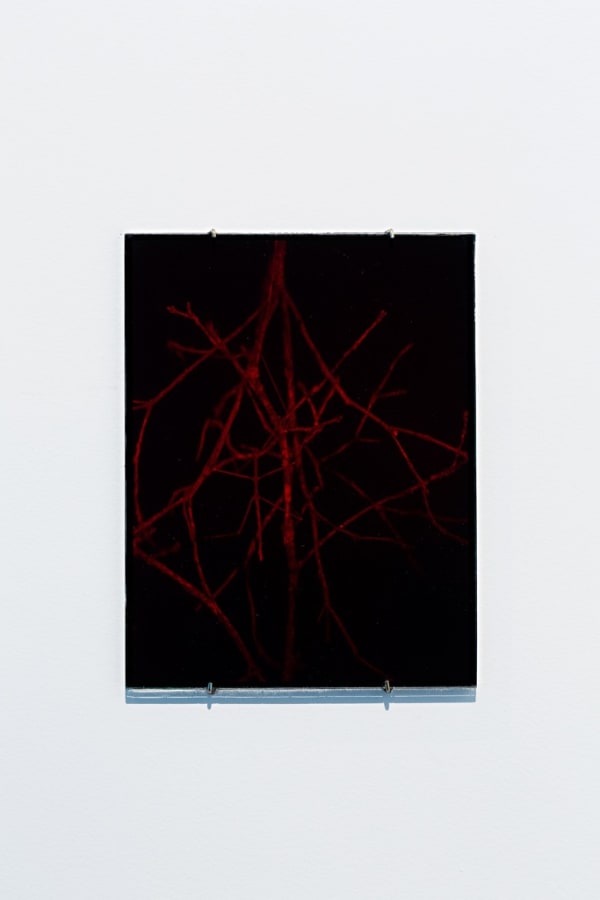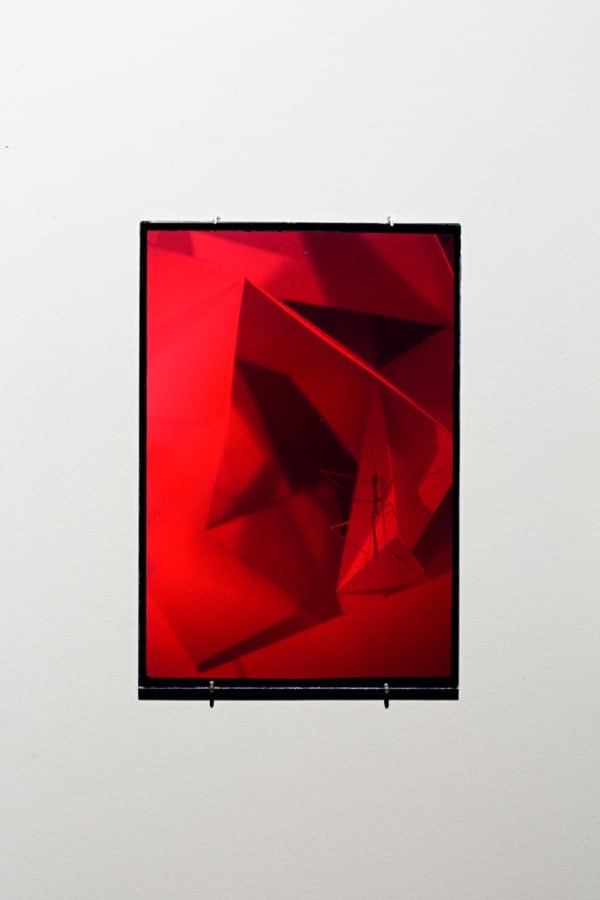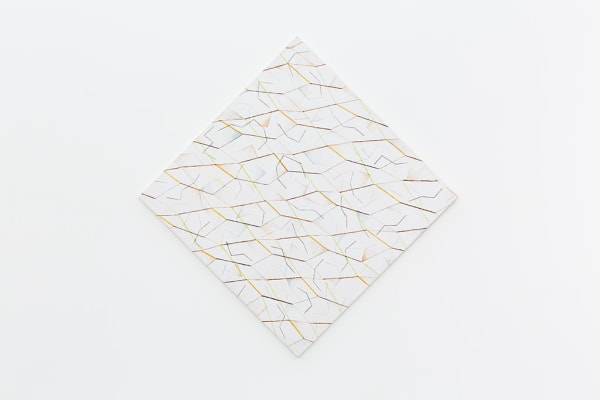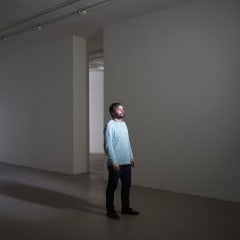Phasmides Daniel Steegmann Mangrané
Past exhibition
Overview
Mendes Wood DM is delighted to present Phasmides, Catalan artist Daniel Steegmann Mangrané's second solo show at the gallery. His new body of work explores ideas of drawing, abstraction, geometry, corporality and immateriality. At the heart of the exhibition is Phasmides, a 16mm film that follows a family of stick insects camouflaged in a complex, geometric set designed by the artist. In a series of highly abstract shots, wherein the insects' silhouettes appear and disappear, Steegmann Mangrané intimates the instability and the fragility of the cinematic image. Over the course of the film, geometric forms become organic and organic forms reveal their geometry; the living bodies seem inanimate and the inanimate latent with life.
A small group of holograms and paintings hung in the main space further explore these ideas. This odd integration of elements is surprisingly suave, as branches and insects blend seamlessly into geometric compositions, investigating a relationship between abstraction and nature. The recurrent figure of the stick insect evokes the possibility of an organism's integration with its environment; this integration is not only perfectly expressed in the phasmida's anatomy, but also in its behavior.
The evolutionary process through which animals camouflage themselves is called crypsis, from the Greek krypticos meaning fit for concealing, which implies that which is hidden in plain sight. In his Essay Mimicry and Legendary Psychasthenia, philosopher Roger Caillois suggests that contrary to popular belief, animals blend into their surroundings not to protect themselves, but rather out of a mythological desire to dissolve into the world.
By bringing together the phasmida and the abstract composition, Steegmann Mangrané aestheticizes biological function and naturalizes art. In Phasmides a quasi-invisible agent reveals points of contact between organic and aesthetic systems. When these creatures are hidden from us, we can only imagine it is because of a secret will to be unified with the artwork. When these creatures reveal themselves, they release the magic of visibility and open our vision to the generative force of life itself, overwhelming distinctions between nature and art. This brings to mind a remark of Paul Klee, that abstractionist so close to the heart of nature, Art does not reproduce the visible. It makes visible.
– Matthew Wood
A small group of holograms and paintings hung in the main space further explore these ideas. This odd integration of elements is surprisingly suave, as branches and insects blend seamlessly into geometric compositions, investigating a relationship between abstraction and nature. The recurrent figure of the stick insect evokes the possibility of an organism's integration with its environment; this integration is not only perfectly expressed in the phasmida's anatomy, but also in its behavior.
The evolutionary process through which animals camouflage themselves is called crypsis, from the Greek krypticos meaning fit for concealing, which implies that which is hidden in plain sight. In his Essay Mimicry and Legendary Psychasthenia, philosopher Roger Caillois suggests that contrary to popular belief, animals blend into their surroundings not to protect themselves, but rather out of a mythological desire to dissolve into the world.
By bringing together the phasmida and the abstract composition, Steegmann Mangrané aestheticizes biological function and naturalizes art. In Phasmides a quasi-invisible agent reveals points of contact between organic and aesthetic systems. When these creatures are hidden from us, we can only imagine it is because of a secret will to be unified with the artwork. When these creatures reveal themselves, they release the magic of visibility and open our vision to the generative force of life itself, overwhelming distinctions between nature and art. This brings to mind a remark of Paul Klee, that abstractionist so close to the heart of nature, Art does not reproduce the visible. It makes visible.
– Matthew Wood
Works
-
 Daniel Steegmann Mangrané, Escultura “forma modelo”, 2013
Daniel Steegmann Mangrané, Escultura “forma modelo”, 2013 -
 Daniel Steegmann Mangrané, Holograma 1 (estrutura e galho), 2013
Daniel Steegmann Mangrané, Holograma 1 (estrutura e galho), 2013 -
 Daniel Steegmann Mangrané, Holograma 2 (estrutura), 2013
Daniel Steegmann Mangrané, Holograma 2 (estrutura), 2013 -
 Daniel Steegmann Mangrané, Holograma 3 (galho sem bicho), 2013
Daniel Steegmann Mangrané, Holograma 3 (galho sem bicho), 2013 -
 Daniel Steegmann Mangrané, Holograma 4 (galho com bicho), 2013
Daniel Steegmann Mangrané, Holograma 4 (galho com bicho), 2013 -
 Daniel Steegmann Mangrané, Holograma 5 (modelo), 2013
Daniel Steegmann Mangrané, Holograma 5 (modelo), 2013 -
 Daniel Steegmann Mangrané, Holograma 6 (estrutura com bicho), 2013
Daniel Steegmann Mangrané, Holograma 6 (estrutura com bicho), 2013 -
 Daniel Steegmann Mangrané, Morfogênesis / Crípsis, 2013
Daniel Steegmann Mangrané, Morfogênesis / Crípsis, 2013 -
 Daniel Steegmann Mangrané, Phasmides, 2008 / 2012
Daniel Steegmann Mangrané, Phasmides, 2008 / 2012
Installation Views











